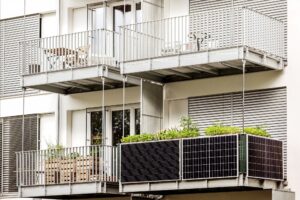Law-firm Squire Patton Boggs explain what the Environment Act means for air quality.
On 9 November, the Environment Bill, the UK’s new flagship law on environmental governance and regulation post-Brexit, received royal assent and became the Environment Act 2021.
It has been a long road since the Bill was first introduced back in January 2020, and there have been many hotly debated issues along the way, not least the provisions relating to air quality. The debate on a number of provisions between the House of Commons and the House of Lords continued right up until the end, so what are the final provisions of the Act in relation to air quality?
Part 4 of the Act (and associated Schedules 11 and 12) is dedicated to air quality, but the air quality provisions that have actually been the most high-profile are contained in Chapter 1 of Part 1, on setting targets.
Air quality targets
There were widespread demands from campaigners, and in amendments proposed by the House of Lords for the Act to include a target to reduce fine particulate matter (PM2.5) to align with (or be more stringent than) the World Health Organisation target. This was consistently resisted by the government, and no firm target appears in the Act.
However, the Act empowers the Secretary of State to set long-term air quality (and other environmental) targets, and requires at least one long-term target to be set in relation to air quality (and in 3 other priory areas). There is also a specific requirement on the Secretary of State to set a shorter-term legally binding target to reduce PM2.5 in ambient air. The Act requires the government to lay draft regulations before Parliament by 31 October 2022 on at least two air quality targets, one on PM2.5, and another long-term target.
Other air quality measures
Part 4 of the Act (and Schedules 11 and 12) contains other provisions relating to air quality, which can be divided into four main subject areas.
Schedule 11 amends and supplements air quality provisions in the Environment Act 1995. It places a duty on the Secretary of State to review the air quality strategy at least every five years, and to produce an annual report to Parliament on progress towards England’s air quality objectives. It also strengthens the local air quality management (LAQM) framework, with the intent of enabling greater cooperation at local level and broadening the range of organisations that play a role in improving local air quality.
Responsibility for tackling local air pollution is now to be shared between designated relevant public authorities, all tiers of local government and neighbouring authorities. The changes to LAQM include requirements for action plans where local air is in breach of air quality objectives.
Schedule 12 amends the Clean Air Act 1993 to allow local authorities to impose financial penalties in smoke control areas. This seems to be squarely aimed at reducing PM2.5 emissions, since domestic stoves/fires are known to contribute significantly to PM2.5 levels. The existing criminal offence of emitting smoke from a chimney in a smoke control area is replaced with a civil penalty regime, which should enable a quicker and simpler style of enforcement for emissions of smoke in these areas.
Existing offences relating to the sale of certain solid fuels in smoke control areas are also enhanced by removing the financial limit on the potential fine that can be imposed, and requiring retailers to notify customers that it is illegal to buy unapproved fuel for use in a smoke control area, unless it will be burned in an approved appliance.
Schedule 12 also amends the Environmental Protection Act 1990 to remove an existing exemption, the effect of which is that smoke from a dwelling in a smoke control area could be actioned as a statutory nuisance. Smoke from chimneys in a smoke control area could therefore in future be the subject of a local authority abatement notice, breach of which is a criminal offence.
Finally, Part 4 of the Act gives powers to the Secretary of State to make regulations for or connected with the recall of relevant products, namely vehicles and engines, if they do not meet relevant environmental standards. This would of course include standards on air emissions. Such regulations may compel manufacturers and distributors to recall products, and may include a minimum proportion of products subject to a recall notice to be returned.
Next steps
The Act is very much a framework and relies on, and in some cases requires, the preparation of secondary legislation to implement many of the initiatives. For many of these, there is no fixed timetable, but there is a commitment that air quality target setting legislation needs to be produced by the end of October 2022. The provisions in Part 4 amending existing legislation in relation to air quality are also not yet in force and the date for this is “to be appointed”. So far, only the provisions regarding the new Office for Environmental Protection have been brought into force, so it will be a case of continuing to monitor when these air quality provisions will come into effect.

















[…] than setting the targets in the Act itself, the Act looks to empower the Secretary of State to set long-term air quality (and other environmental) targets. There is also a specific requirement for the Secretary of State to set a shorter-term […]
★Makes 💵$340 to 💵$780 per day online work and I received 💵$21894 in one month online acting from home. I am a daily student and work simply one to a pair of hours in my spare time. Everybody will do that job and online ask extra cash by simply .
open this link HERE↠↠↠☛ http://www.pays11.com